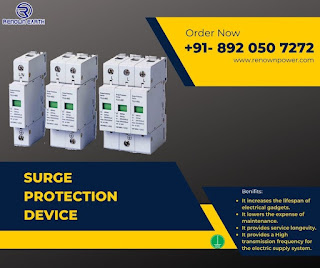What is a surge arrester? Can surge protectors save your electronics?

A surge protector is an electrical device that protects equipment from power surges and overvoltage while also blocking voltage above a safe level. When it exceeds 120 volts, the surge protector trips to ground voltage or even shuts it off. If surge protectors are not used, anything beyond 120 V can cause component difficulties such as irreversible damage, the lower lifespan of internal electronics, burnt wires, and data loss. It is one of the most important components in chemical earthing . Transient Surge Protectors aim to control the voltage provided to electric equipment by either interrupting or shorting current to minimize the voltage that falls below the safe level. You may now perform the same thing by employing an inductor that prevents an abrupt shift in the current. Spark gaps, Zener-type semiconductors, and MOVs, all of which start to conduct current after it reaches a particular voltage threshold, or by capacitors that prevent an abrupt shift in voltage also accomplis
.jpg)
.jpg)

.jpg)